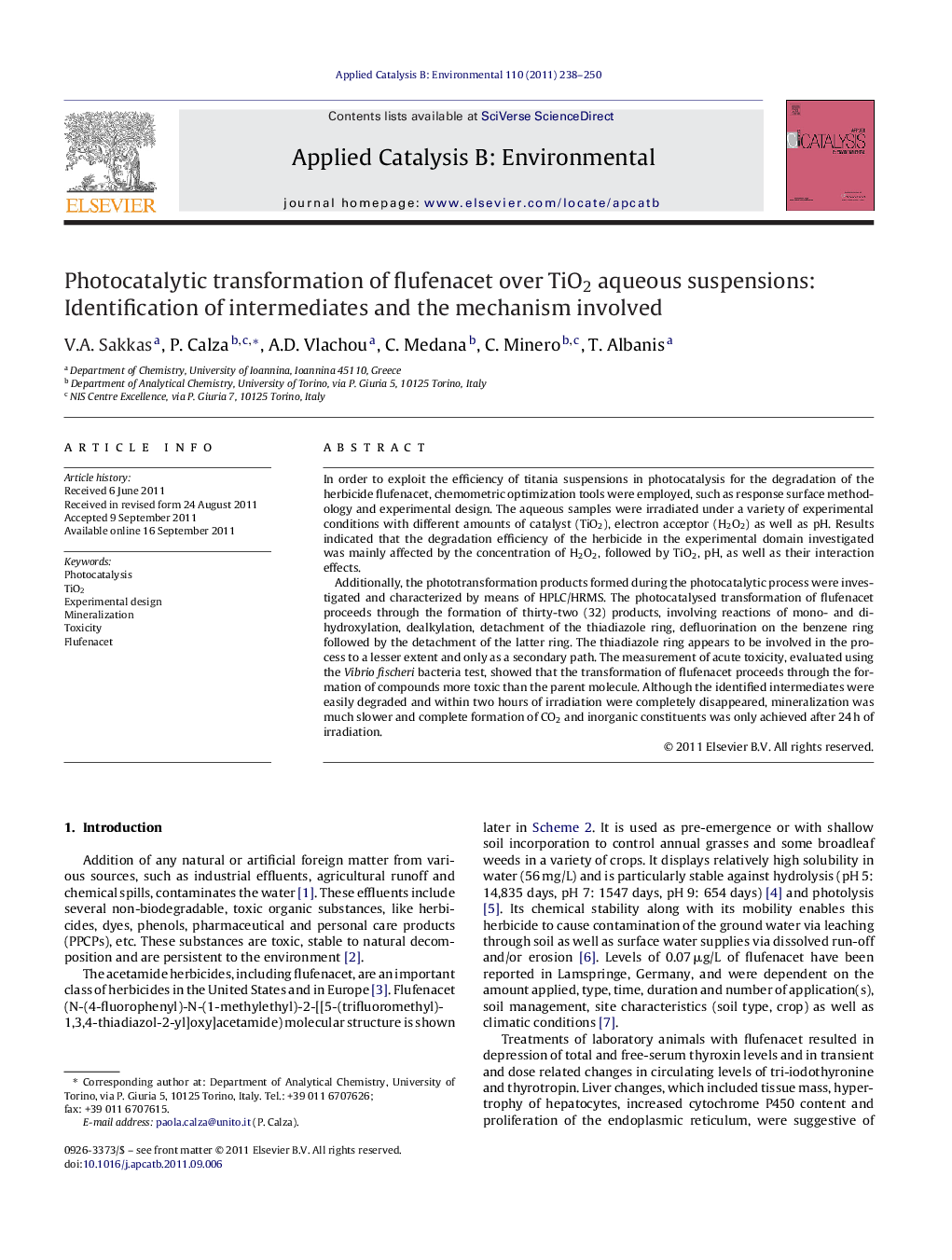| کد مقاله | کد نشریه | سال انتشار | مقاله انگلیسی | نسخه تمام متن |
|---|---|---|---|---|
| 46595 | 46442 | 2011 | 13 صفحه PDF | دانلود رایگان |

In order to exploit the efficiency of titania suspensions in photocatalysis for the degradation of the herbicide flufenacet, chemometric optimization tools were employed, such as response surface methodology and experimental design. The aqueous samples were irradiated under a variety of experimental conditions with different amounts of catalyst (TiO2), electron acceptor (H2O2) as well as pH. Results indicated that the degradation efficiency of the herbicide in the experimental domain investigated was mainly affected by the concentration of H2O2, followed by TiO2, pH, as well as their interaction effects.Additionally, the phototransformation products formed during the photocatalytic process were investigated and characterized by means of HPLC/HRMS. The photocatalysed transformation of flufenacet proceeds through the formation of thirty-two (32) products, involving reactions of mono- and di-hydroxylation, dealkylation, detachment of the thiadiazole ring, defluorination on the benzene ring followed by the detachment of the latter ring. The thiadiazole ring appears to be involved in the process to a lesser extent and only as a secondary path. The measurement of acute toxicity, evaluated using the Vibrio fischeri bacteria test, showed that the transformation of flufenacet proceeds through the formation of compounds more toxic than the parent molecule. Although the identified intermediates were easily degraded and within two hours of irradiation were completely disappeared, mineralization was much slower and complete formation of CO2 and inorganic constituents was only achieved after 24 h of irradiation.
Figure optionsDownload as PowerPoint slideHighlights
► Study of the photolytic and photocatalytic transformation of flufenacet in water.
► We study effects of several important parameters, such as pH values, TiO2 loading, H2O2, and light intensity on flufenacet photocatalysis.
► The optimal experimental condition for flufenacet degradation is obtained.
► We identify 36 phototransformation products using HPLC–HMS and propose a tentative reaction pathway.
Journal: Applied Catalysis B: Environmental - Volume 110, 2 November 2011, Pages 238–250